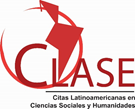Education in the city of Tabriz during the period of Qajars (historical-ethnological research)
Resumen
The article examines the characteristics of the development of the educational system in the city of Tabriz during the Qajar era (traditional education: religious schools, madrasas, and women's schools) from the second half of the 19th century. Tabriz considered the second capital of the Qajar state and the residence of the crown prince, was regarded as the foremost city in the state from cultural, political, and economic perspectives. While the traditional system of religious education in schools and madrasas persisted there in the 19th century, a new type of school, the "usuli-Jadid," and a higher education institution (Darulfunun) were also established, gradually transitioning from religious to secular education. During that period, students were sent to Europe (England) for the first time to study medicine, engineering, translation, painting, and other fields. For the first time in Iran, a printing press was brought to Tabriz, and various books were published, including literature translated from European languages. Thus, education during the Qajar dynasty exposed Persians to new ideas and knowledge, laying the foundation for intellectual and social development in the 20th century.
Keywords:
Tabriz, Qajars dynasty, Education, School, Madrasa, Hasan Rushdiyya.
RESUMEN
El artículo examina las características del desarrollo del sistema educativo en la ciudad de Tabriz durante la era Qajar (educación tradicional: escuelas religiosas, madrasas y escuelas de mujeres) a partir de la segunda mitad del siglo XIX. Tabriz, considerada la segunda capital del estado Qajar y residencia del príncipe heredero, en realidad era considerada la ciudad más importante del estado desde las perspectivas cultural, política y económica. Si bien el sistema tradicional de educación religiosa en las escuelas y madrasas persistió allí en el siglo XIX, también se establecieron un nuevo tipo de escuela, los "usuli-Jadid", y una institución de educación superior (Darulfunun), pasando gradualmente de la educación religiosa a la secular. Durante ese período, los estudiantes fueron enviados a Europa (Inglaterra) por primera vez para estudiar medicina, ingeniería, traducción, pintura y otros campos. Por primera vez en Irán, se llevó una imprenta a Tabriz y se publicaron varios libros, incluida literatura traducida de idiomas europeos. Así, la educación durante la dinastía Qajar expuso a los persas a nuevas ideas y conocimientos, sentando las bases para el desarrollo intelectual y social. desarrollo en el siglo XX.
Palabras clave:
Tabriz, dinastía Qajars, Educación, Escuela, Madraza, Hasan Rushdiyya
Publicado
Cómo citar
Número
Sección
Licencia
Derechos de autor 2024 Editorial "Universo Sur"

Esta obra está bajo una licencia internacional Creative Commons Atribución-NoComercial-SinDerivadas 4.0.
La editorial "Universo Sur", de la Universidad de Cienfuegos, publica el contenido de la Revista "Universidad y Sociedad" bajo una Licencia Creative Commons Atribución-NoComercial-SinDerivar 4.0 Internacional.
© Podrá reproducirse, de forma parcial o total, el contenido de esta publicación, siempre que se haga de forma literal y se mencione la fuente.










